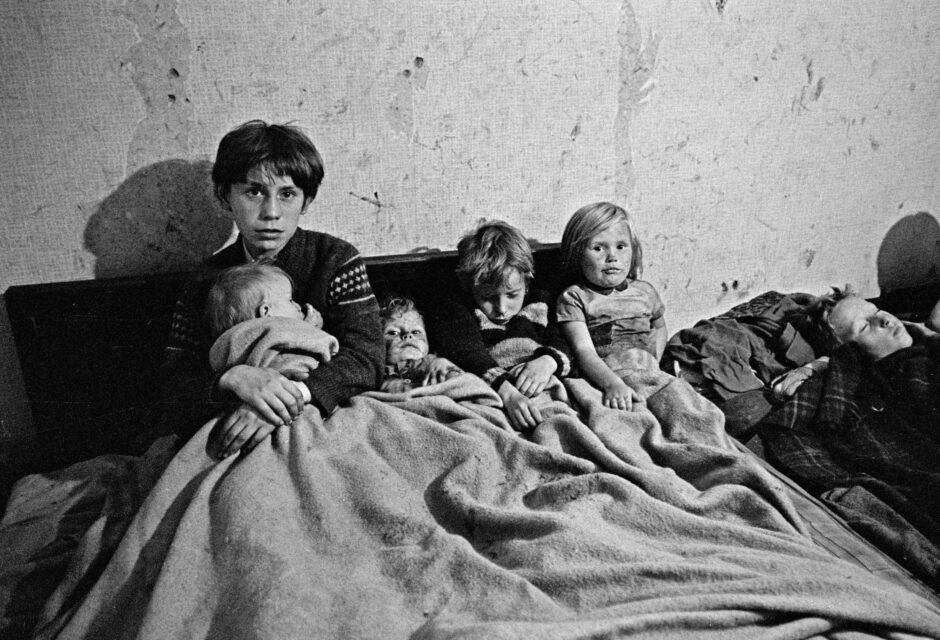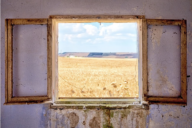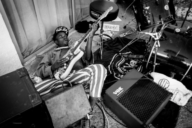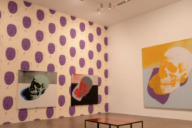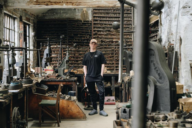NICK HEDGES: WORKING CLASS CULTURE AND AN INDUSTRIAL WORKPLACE COMMONALITY
Nick Hedges was born in Bromsgrove, 1943. He studied photography at Birmingham College of Art during 1965-1968, and worked with Birmingham Housing Trust on an exhibition about the city’s terribly housed residents.
From 1968 – 1972 Nick was commissioned by the housing charity Shelter to document the harsh living conditions that people in poverty were forced to live in. The photographs formed a body of work called ‘Make Life Worth Living’ and was used to help Shelter campaign better for those in poverty. He then consequently worked in London for Shelter as a photographer and researcher, producing numerous exhibitions and publications.
Through this work, Nick’s’ photographs of the West Midlands, Manchester, Leeds, Bradford and London played a significant role in exposing the terrible living conditions faced by many people in Britain at that time.
He returned to the Midlands to complete a 2 year photographic documentary project of factory work.
Between 1976 and 1978 Nick documented workers at Bilston Steelworks (and Birchley Rolling Mills in Oldbury) the workers became the subjects of Nick Hedges’ photographic observation of working life. The photographs were published as a book ‘Born to Work’ in 1982 and depict stark images of factory life in the Black Country.
Depicted in these photographs is a working class culture – an industrial workplace commonality – with its own shared history and values. As well as the Born To Work book, the project was also exhibited widely to critical acclaim.
Nick’s photographs capture a mixture of hard graft, humour, virtue and dignity whilst also capturing a spirit of social empathy. The pictures are not rose-tinted but do still manage to show people united together by their shared triumphs and struggles.
Here he tells us about his creative process…
What influenced you when you started out taking photographs?
My first major influences were the photographers who worked for the FSA in Roosevelt’s New Deal in America, people like Dorothea Lange. And then W Eugene Smith’s photo essays for Life magazine. I was impressed by both their compassion and their beautiful rendering of tone in black and white photography. A little later I became heavily influenced by Walker Evans and James Agee’s book ‘Let us now praise famous men’ because of the attitude that they took to their own responsibilities in photographing and documenting tenant farmer families.
What qualities made you want to photograph a subject (and what were their reactions to being photographed?)
Because of the time when I first made photographs, the mid 1960s, I became convinced that photography should be used to reveal the truths about our unjust and prejudiced society. The first photography book I bought was ‘A Matter of Colour’ a Penguin special about the struggle for desegregation and voter registration in the southern states of America. I realised that forming the right relationship to the people I photographed was essential to the significance and meaning of the photograph.
Did you ever find it difficult approaching your subjects?
I have never been happy about ‘candid’ photography in which the photographer uses their subject to make their own point, so I am uneasy about making images before I can explain the purpose of my interventions.
You tended to shoot a lot of your mages in black and white. Was this a deliberate decision for the mood and atmosphere, or done through necessity?
Black and white photography was the only media used when I first started making documentary, colour was in its infancy and only employed in magazines and advertising that could afford to reproduce images in full colour. My active life as a photographer between 1965 and 1980 was wholely spent working for myself or for organisations that just wanted black and white photography. I have always processed my own film and made my own prints, I believe it makes you a better balanced individual to do all the craft work yourself. Mood and atmosphere had nothing to do with it, it was just the sea I swam in.
Is there anything that you have learned about human nature through doing your photography?
I’ve learnt that humility and a generosity of spirit are essential. It is fear of the unknown and insecurity that distorts and drives the worst in humankind.
In your photographs you’ve captured hardship and poverty and the Britain that no one wanted to see. Do you feel things have changed much in 2021?
The material circumstances in which most people find themselves has improved but society remains deeply fractured. Institutional racism has not been overcome and poverty still drives prejudice. The imbalances in our society and the insecurities have been exacerbated by zero hours contracts, by automation, and by the loss of a sense of worth that full time employment brought.
Could a collection of photography like ‘Make Life Worth Living’ be produced now?
Colour photography changes the way in which meaning is conveyed in photographs. It would be possible to depict our imbalanced society but it would require a different approach, colour changes what we focus on and see.
Your work in the factories and steelworks in the West Midlands really captures a heart and soul of the subjects and portray a very different image of the ‘working classes’ that were present in mainstream media at the time. How important was that sense of challenging mainstream perceptions?
It was core to my approach to challenge mainstream perceptions of work in factories and steelworks. The nature of work, the skills employed, the deep relationships forged all these were part of my journey of discovery.
What are the lasting memories that stay with you from Dudley and the Black Country?
I remember with deep affection the fortitude, the sense of self worth, the skill and intelligence, the loyalty, and the sense of camaraderie and humour, all of which characterised the workers I met and photographed. All of which was chucked on the scrapheap just six or seven years later.
What was your most memorable photographic experience that had the biggest impression on you?
It was my first transformative experience as a photographer, working for the Birmingham Housing Trust as a final year student. I made an exhibition of 6 foot by 4 foot photographs that were displayed outside in Birmingham City Centre in 1968. It led on to my employment by Shelter the national Campaign for the Homeless.

